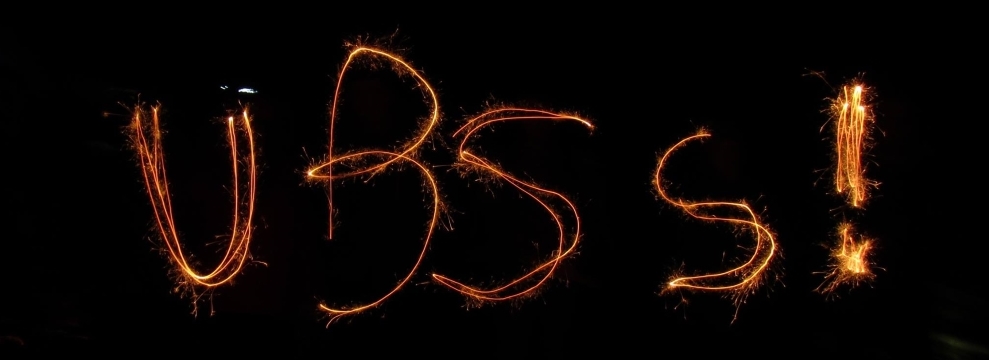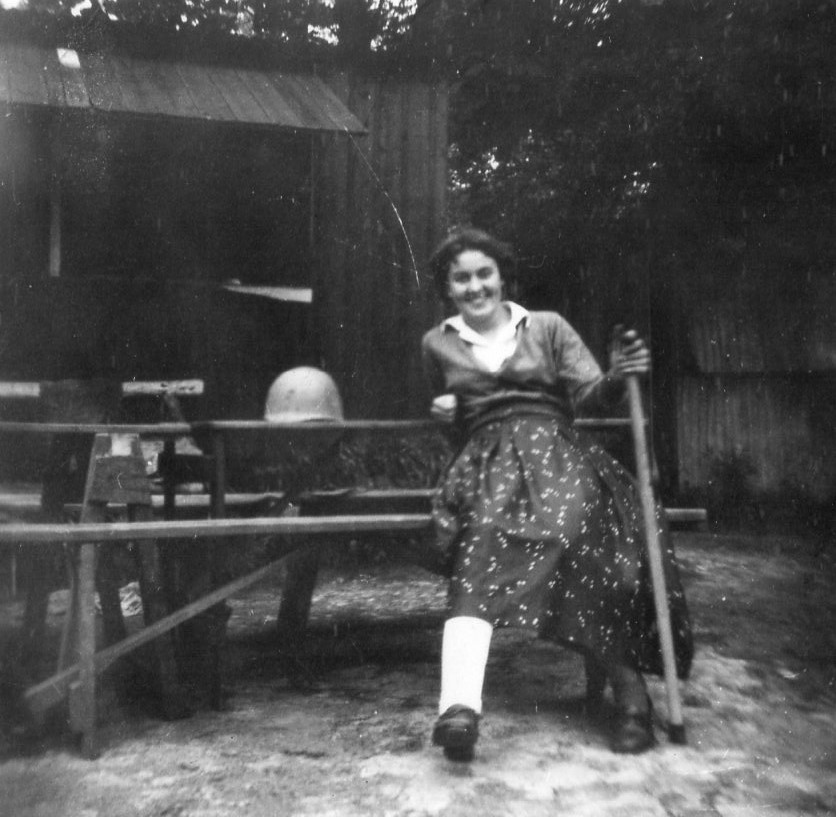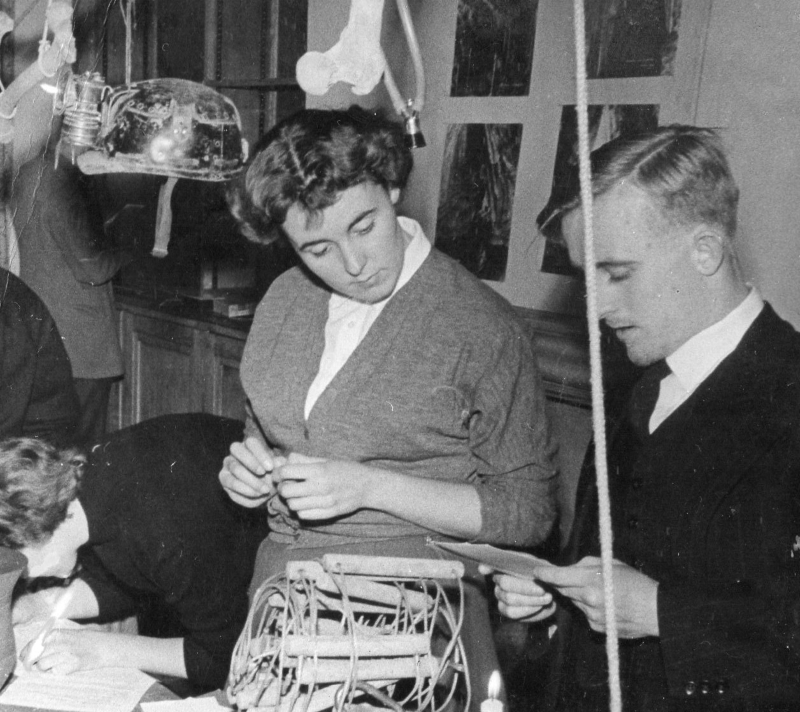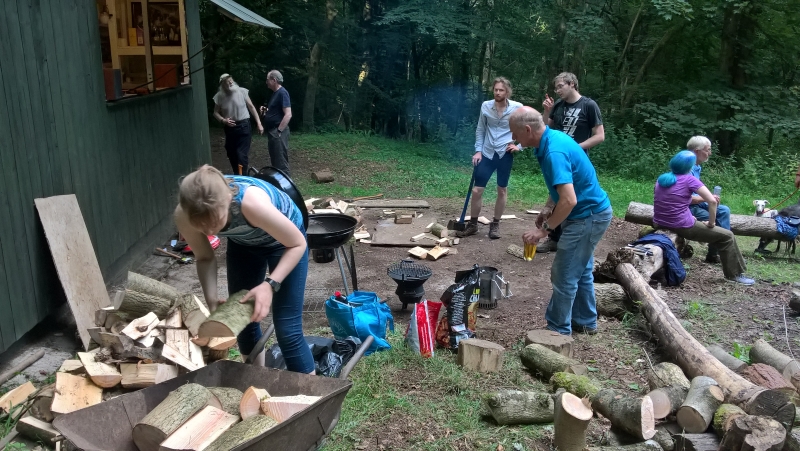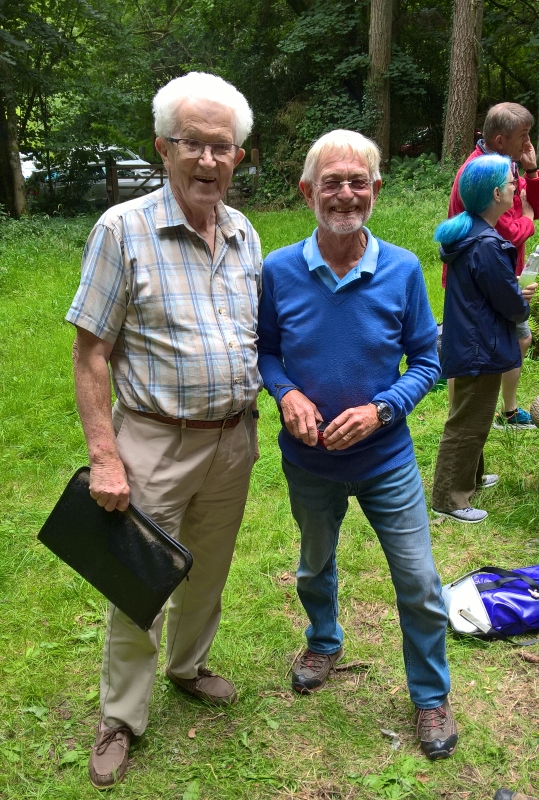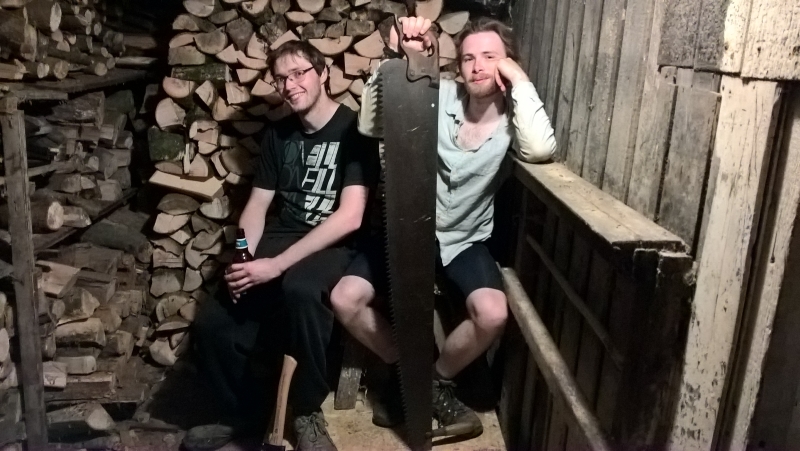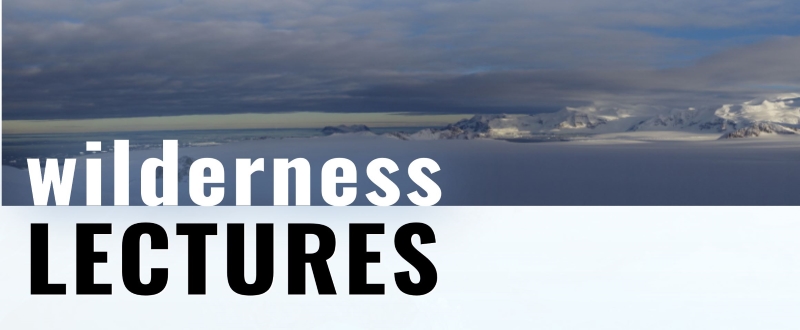
As many of you will know, UBSS member Dick Willis is one of the
organisers of the Wilderness Lecture series, which every year brings
together some of the biggest names in the outdoor world for a series of
lectures in Bristol.
The latest programme of talks has now been announced.
including caver and diver Andy Torbet, climber Peter Habeler and
astronaut Helen Sharman. Check out the line up and get some dates in
your diary now!
|
|
DISPATCHES FROM AUSTRIA
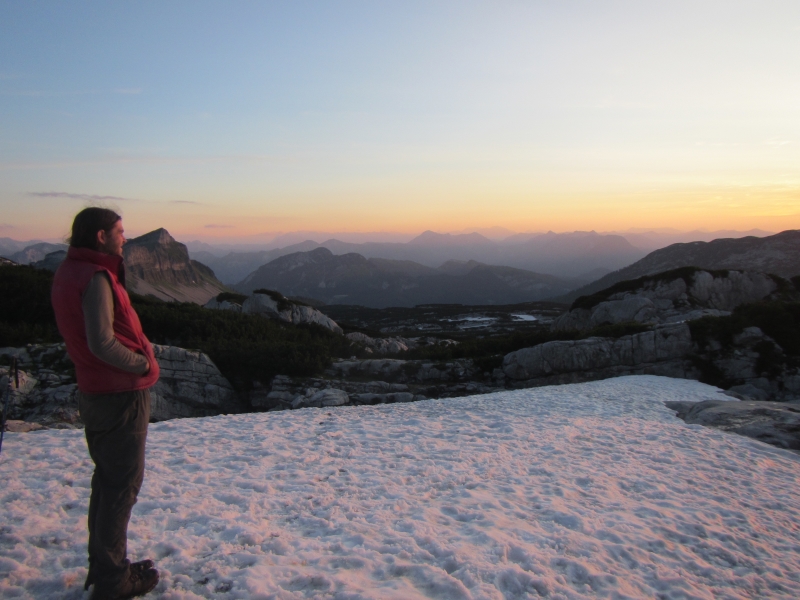
The view from the entrance of Top Camp. Photo by Pete Talling.
This summer saw various UBSS
members joining the annual Cambridge University Caving Club expedition
to Austria. Pete Talling reports...
Our top camp bivvi under the stone arch had to be dug out, as it was
mainly plugged full of snow. But now there are big going leads at the
north of main system (Balcony Hohle) and also major new caves further
west (Homecoming and Fishgeschichte)- which are in the gap between our
system (120km) and the nearby 220km one. There will be a 500km long cave
there one day.
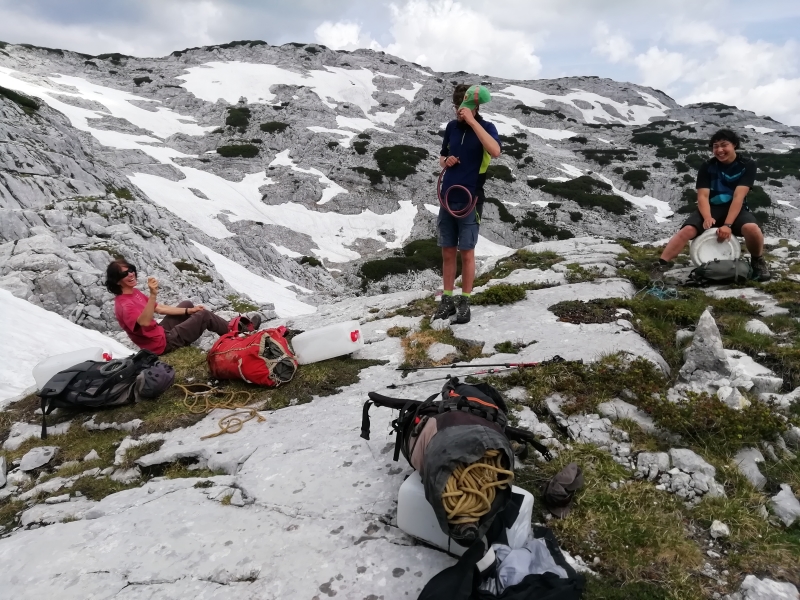
Outside Orgenhohle. Photo by Pete Talling.
We also de-rigged and pulled back the
Orgenhohle mini camp, as there were too many fronts to work. We blew a
'last post' on a hosepipe that had been left that Orgenhohle camp, along
with other odd items such as Haydon's body building powder.
Other UBSS members on the expo included Dickon Morris, Dan Heins and Andrew Atkinson.
Pete Talling
|
|
SAVE THE DATE!
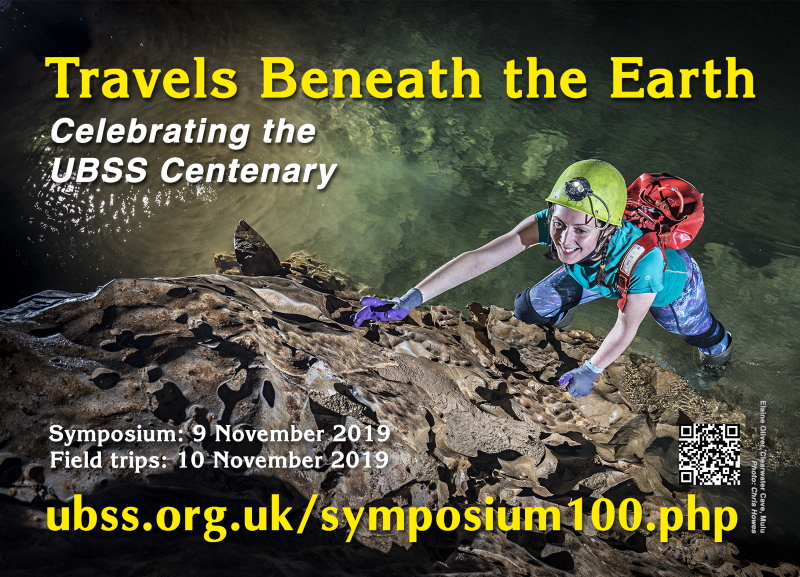
Elaine Oliver in Clearwater Cave, Mulu, photo and image courtesy of Chris Howes.
On the weekend of 9th and 10th November,
UBSS will be celebrating its centenary with a day of talks from members
of the society and friends, followed by a day of field trips. Dr Rick
Schulting is giving the keynote lecture, talking about bones from
Charterhouse Warren Farm Swallet, first written up in Proceedings
in 1988, that have now been found to have evidence of cannibalism.
Rick's talk, entitled The darker angels of our nature: a butchered
prehistoric human assemblage from Charterhouse Warren, will be the first
presentation of the recent work on the bones. Cannibalism on Mendip is
bound to be a crowd pleaser!
Other speakers include Andy Flack, Linda Wilson, Rhiannon Stevens,
Ashley Gregg, Dick Willis, Elaine Oliver, Pete Smart, Dave Drew and Tim
Atkinson. In addition, poster
presentations are welcome from students, members and friends on
research, speleological and archaeological, and exploration topics of
relevance to the UBSS story and its place in the wider caving and
archaeological community.
The symposium is kindly being hosted by the
Geography Department on University Road and will be held in the same
rooms we had for the AGM. Keep an eye on our website for further details.
|
|
IT'S AN HONOUR!
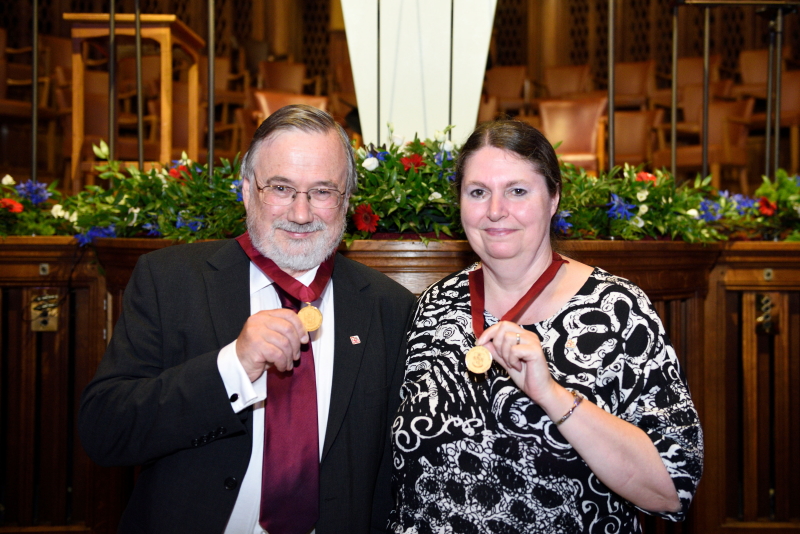
Graham and Linda at the alumni weekend
showing off their medals. Linda received what was then known as the
Convocation medal three years ago, making them the only couple to have
both been honoured in this way.
At the university's reunion weekend
in July, UBSS treasurer Graham Mullan was awarded the Alumni
Association medal for long and outstanding service to the alumni
community.
In addition to his work for the society as
both treasurer and editor of Proceedings, Graham helped provide the
nucleus of what has expanded to form a vast network of alumni who are
now in contact with the university. This is the first time a
non-graduate has received the prestigious medal and it's particularly
fitting that this has been awarded during the Society's centenary year.
Graham received the medal from Vice Chancellor Hugh Brady at the
celebration lunch in the Wills Memorial Building.
|
|
THEY DON'T MAKE 'EM LIKE THEY USED TO!
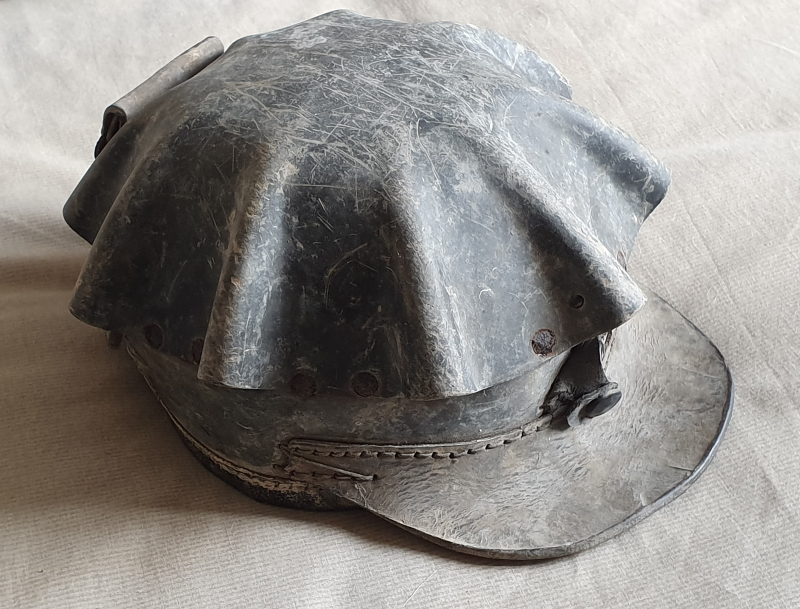
Marjorie Crook's helmet.
Anyone who has been in our current
rooms in The Stables will be familiar with the sight of Tratman's helmet
and carbide lamp on one of the cabinets in the library. This is now
about to gain a companion ...
Thanks to the generosity of the Manton/Crook family, Marjorie Crook's
helmet has now been donated to the museum and will be joining Trat's
helmet on display. Marjorie, the great-grandmother of current committee
member Lauren Manton, wore this during her caving career in the 1930s
and 40s.
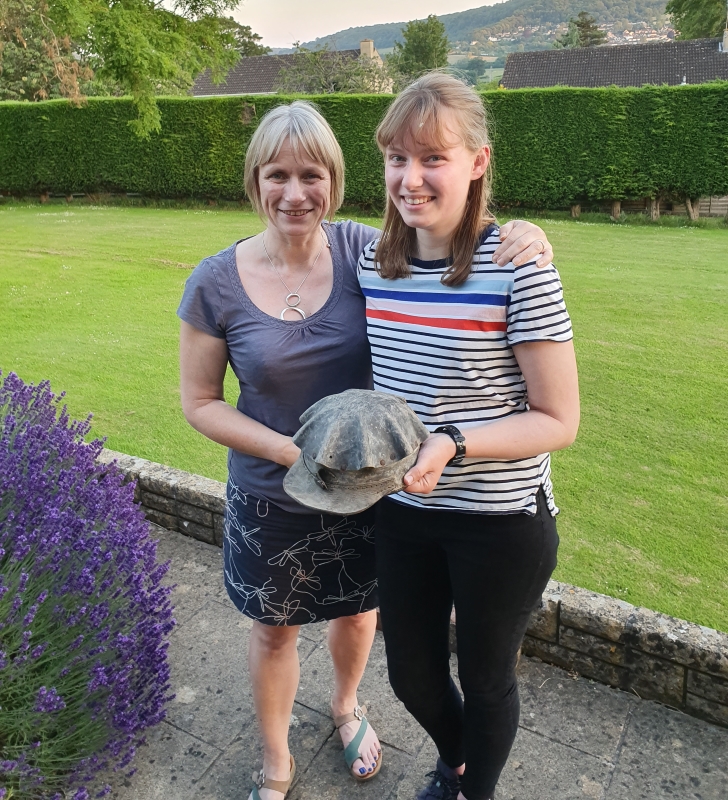
Sophie (left) and Lauren Manton. Sophie started her caving career with Cardiff University.
The helmet is an unusual design and if anyone can shed any light on the type and the manufacturer, that would be great!
|
|
GRIMES GRAVES, NORFOLK
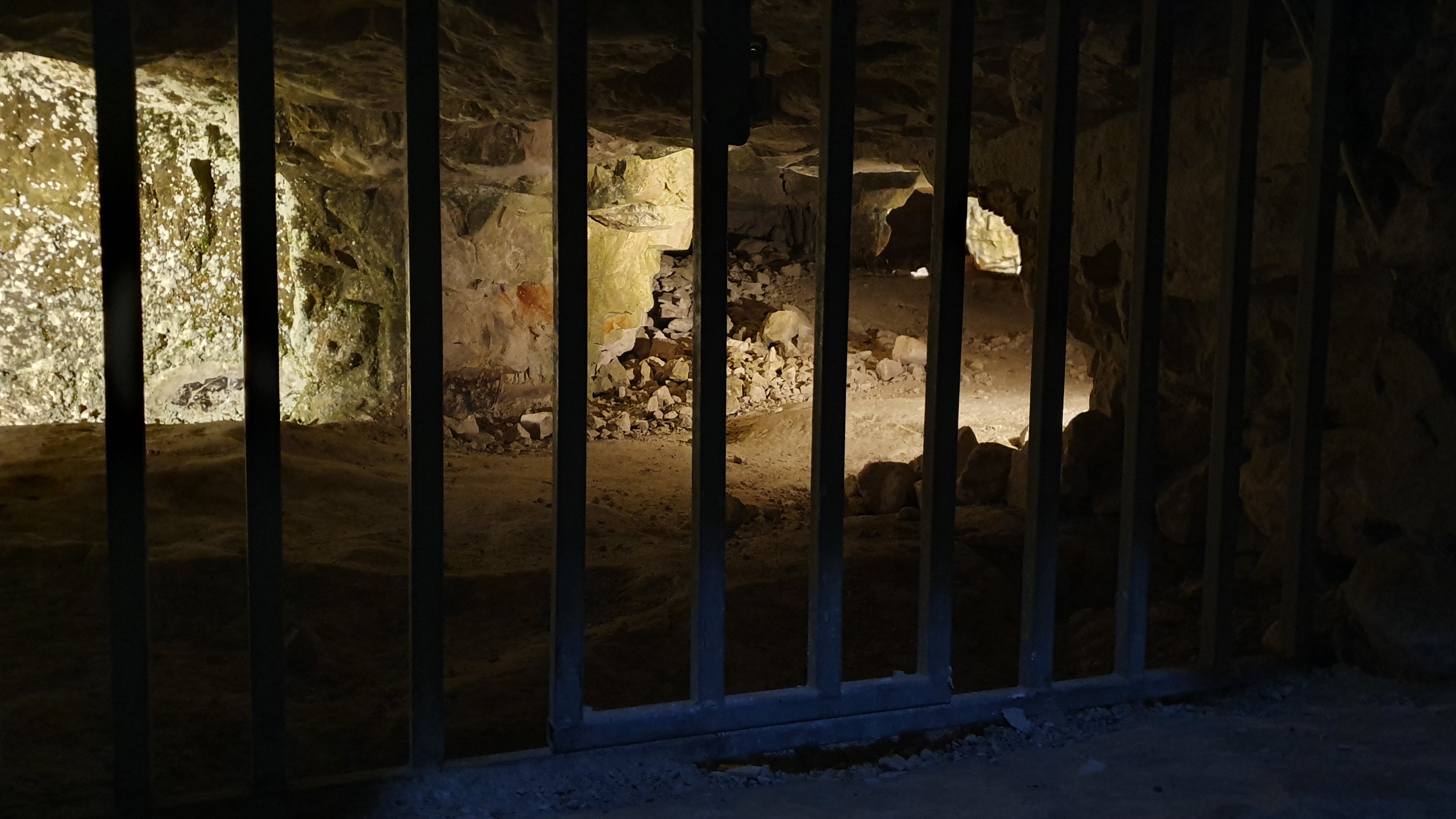
Grimes Graves, horizontal gallery. Photo by Graham Mullan.
Norfolk isn't the first pace anyone
would think of when caving regions are mentioned, but that doesn't mean
the county is without underground interest, as Graham Mullan
explains....
For a few days in July, Linda and I took
the campervan over to East Anglia. Linda wanted to investigate the
medieval graffiti in some churches, and we took the opportunity to visit
old friends, one of whom now runs a caravan site at the end of the
runway at RAF Mildenhall (don’t ask!).
Not all our time was spent in churches; our hosts wondered what on earth
cavers might find to do in the Fens and came up with the same answer
that we had done. Grimes Graves, the only publicly accessible Neolithic
flint mine in Britain.
The surface earthworks of the mines have long been recognised as ‘old’,
Grime, or Grim being another name of the Saxon god Woden, but it was not
until one of the shafts was excavated in 1870 by that both their age
and function were discovered.
Several of the 400 and more identified shafts have been excavated and
one of them has been kept open for visitors by English Heritage. “Shaft
1” is 9 m deep and is accessed by a fixed ladder – having first signed a
form to promise EN that you won’t fall off it! This leads down
into a roomy circular chamber from which a number of horizontal
galleries radiate. These are illuminated but are grilled off to prevent
access. They are quite low, less than 1 metre in height, and partially
backfilled with chalk rubble.
To reach this depth, the Neolithic miners had excavated through thick
layers of chalk and two beds of flint, before reaching the ‘floorstone’
seam which interested them the most.
The mines were worked between about 2,200 and 2,500 BC. Probably no more
than one or two pits were in use at any one time but in total about 60
tons of flint were removed which could, in turn, have produced 10,000
polished stone axe heads.
One thing of particular interest is that abstract engravings attributed
to the Neolithic have been identified in some of the shafts and I was
hopeful of seeing some and comparing them to the Aveline’s Hole engravings
now that the window in which they might have been made has been
extended to at least the early Neolithic. Unfortunately, the engravings
are not in the open shaft and annoyingly, none of the Neolithic flint
mines that contain identified engravings seem to be accessible anywhere
in the country, but a useful summary can be found in “Interpreting hidden chalk art in southern British Neolithic flint mines” by AnneTeather
So, if you do find yourself in the flatter part of the country, you now
have no excuse for not getting underground. And remember, Grimes Graves
is a much better place for this than on a bus in Norwich...
Graham Mullan
|
|
NORMAL FOR NORFOLK - 100 MEMORIES
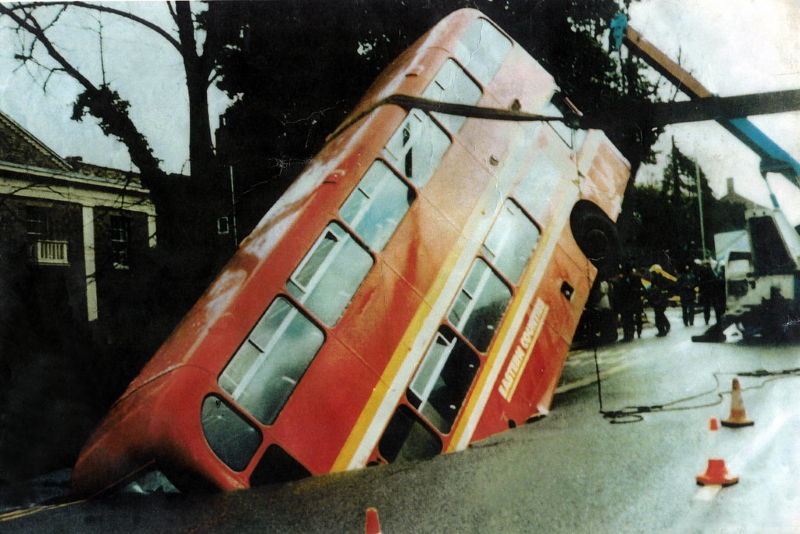
Once upon a time on a Friday
afternoon, Linda Wilson was whiling away the time before being able to
disappear home, when a phone call disturbed the peace and provided an
unusual alternative to conveyancing for the rest of the day...
In 1988, I received a rather bizarre phone
call from a caver in Norwich, who informed me that a double decker bus
had fallen into an old chalk pit, and he was concerned that the city
council were just going to fill all the tunnels with concrete.
I
got the call as, for my sins, I was then chair of the Council of
Southern Caving Clubs. In response to my weak response that I didn’t
really think our area went that far, he briskly pointed out that Norwich
certainly wasn’t ‘Ooop North’. I then suggested he tried the Derbyshire
Caving Council as they were probably geographically closer. His
rejoinder: ‘They told me to ring you!’ rather put an end to my attempts
to pass the buck.
I then spent the rest of the afternoon on the phone to the planning
department, trying to convince them of the historic value of the mines. I
think the wholesale deployment of concrete was at least temporarily
foiled by my frequent mention of bats being protected species! I had no
idea whether there were bats there or not, but neither did they, so the
argument carried some weight. Fortunately, my boss at the time was caver
and cave diver Mike Thompson who saw nothing in the slightest bit odd
about me spending all afternoon, when I should have been working,
talking to people about a bus down a hole on the other side of the
country.
This incident, which even made the BBC news, makes an appearance in fiction as well, in The Chalk Pit by Elly Griffiths, a crime novel set in Norfolk starring archaeologist Ruth Galloway.
Linda Wilson
|
|
A MONTH IN THE MUSEUM
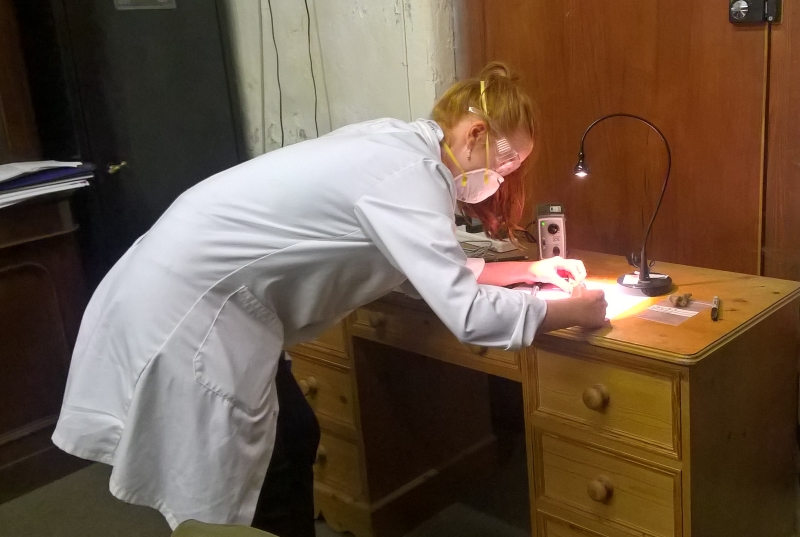
Adele Bricking sampling specimens from Backwell Bone Cave.
It’s been a busy month in the museum, with researchers from three different institutions paying visits.
July started with a visit from Rhiannon Stevens from UCL on the hunt for
humans, as reported in the last newsletter. This was followed by three
days spent with Tim Pearson and Olivia Loizides, both MA students from
Royal Holloway, working on their dissertations. Olivia is looking to
reconstruct the body mass of red foxes (Vulpes vulpes) through
time (roughly over the last 120,000 years) by measuring fox bones and
teeth and Tim is studying the bones from Rhinoceros Hole at Wookey, as
well as the material from the nearby Badger Hole (held in Wells and
Mendip Museum).
In addition, Adele Bricking, doing a PhD at Cardiff University on Iron
Age Mortuary sites, came along to take some samples for dating and
isotope work from Backwell Bone Cave, a site that is crying out for more
work. More detail on all these visits will follow in future
newsletters.
|
|
2019 CALENDAR
| Don't forget to get these dates in your diary!
21st/22nd September, South Wales leader training weekend for current students in how to lead/second trips.
27th September, University of Bristol Students' Union Welcome Fair
25th-27th October, SUICRO Symposium in Carrick, Co Leitrim including the Irish launch for Caves of Mid-West Ireland.
12th-13th October, Freshers' Weekend at White Walls (or elsewhere).
19th-20th October, Freshers' Weekend at SWCC.
2nd-3rd November, Bonfire Weekend at the Hut.
9th - 10th November, UBSS Centenary
Symposium in the School of Geographical Science. There will be a
programme of talks on Saturday 9th November including the Bristol book
launch for Caves of Mid-West Ireland, the successor to all the society's
previous guidebooks to Clare and the surrounding areas , On Sunday
there will be various field trips.
|
|
|
|
|
|
